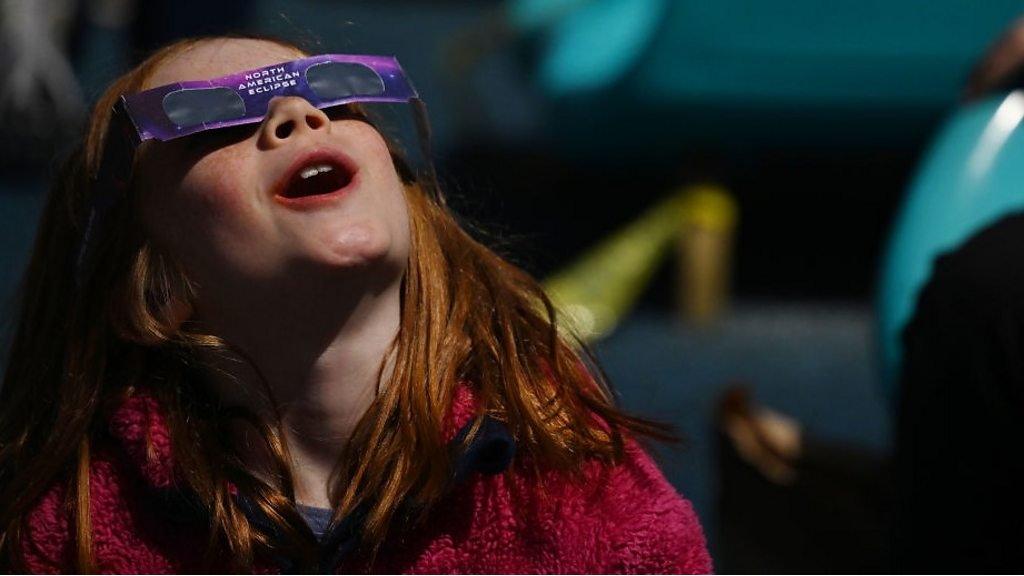New satellites to create on-demand total solar eclipses
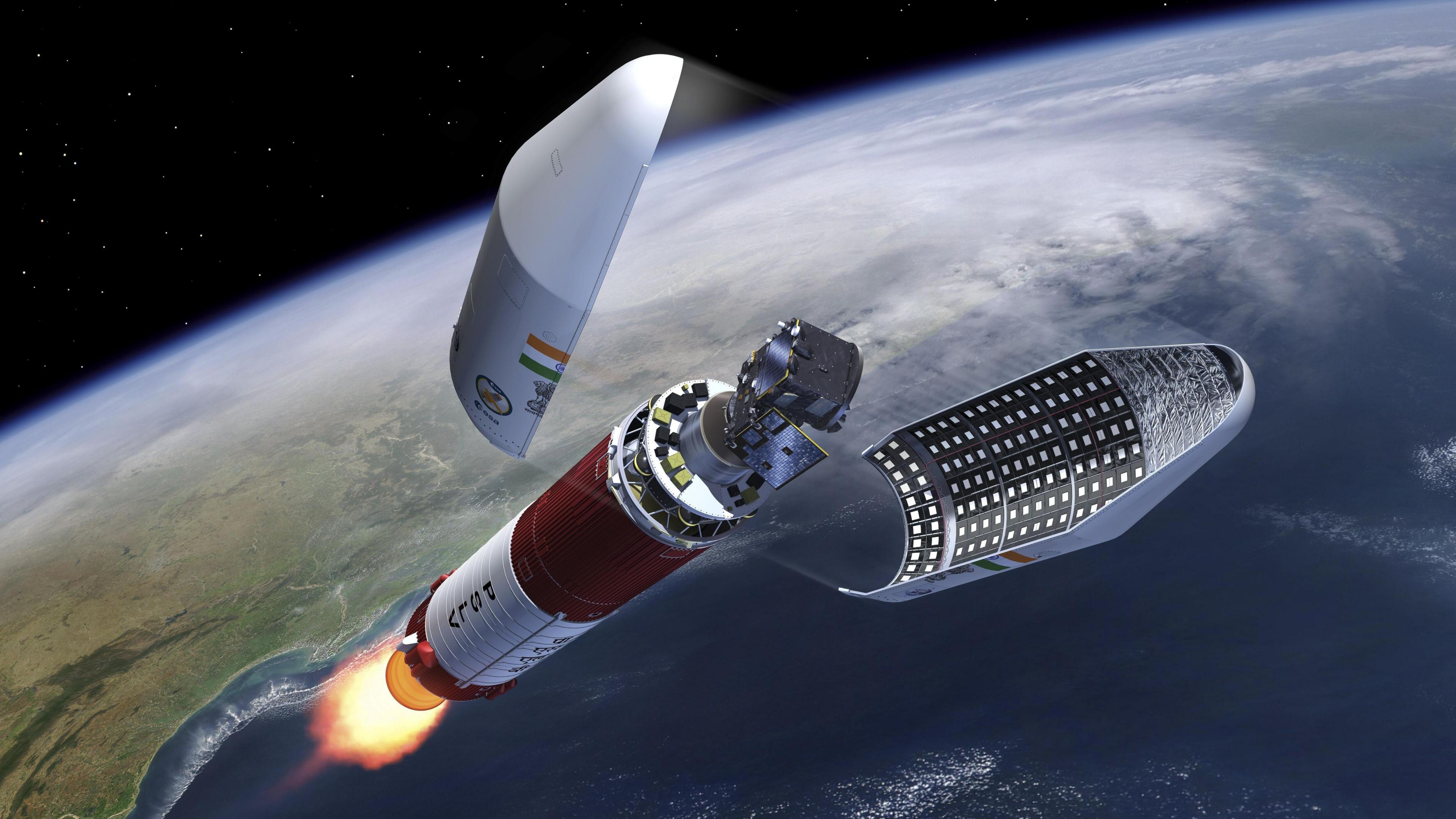
The satellites will blast off on Wednesday 4 December
- Published
Using technology to block out the Sun sounds like the script of a movie, but now scientists plan to do it for real.
It's not a dastardly plot by a super-villain, experts hope it'll help them to study the Sun in more detail.
The Proba-3 mission from the European Space Agency involves two spacecraft, with one spacecraft covering the Sun for the other.
The craft will launch together from Satish Dhawan Space Centre in India on Wednesday.
More space stories
Earth's mini 'second moon' is disappearing into space
- Published26 November 2024
The Sun's 'many faces' revealed in new images
- Published22 November 2024
Scientists shine light on the Sun's magnetic field
- Published23 May 2024
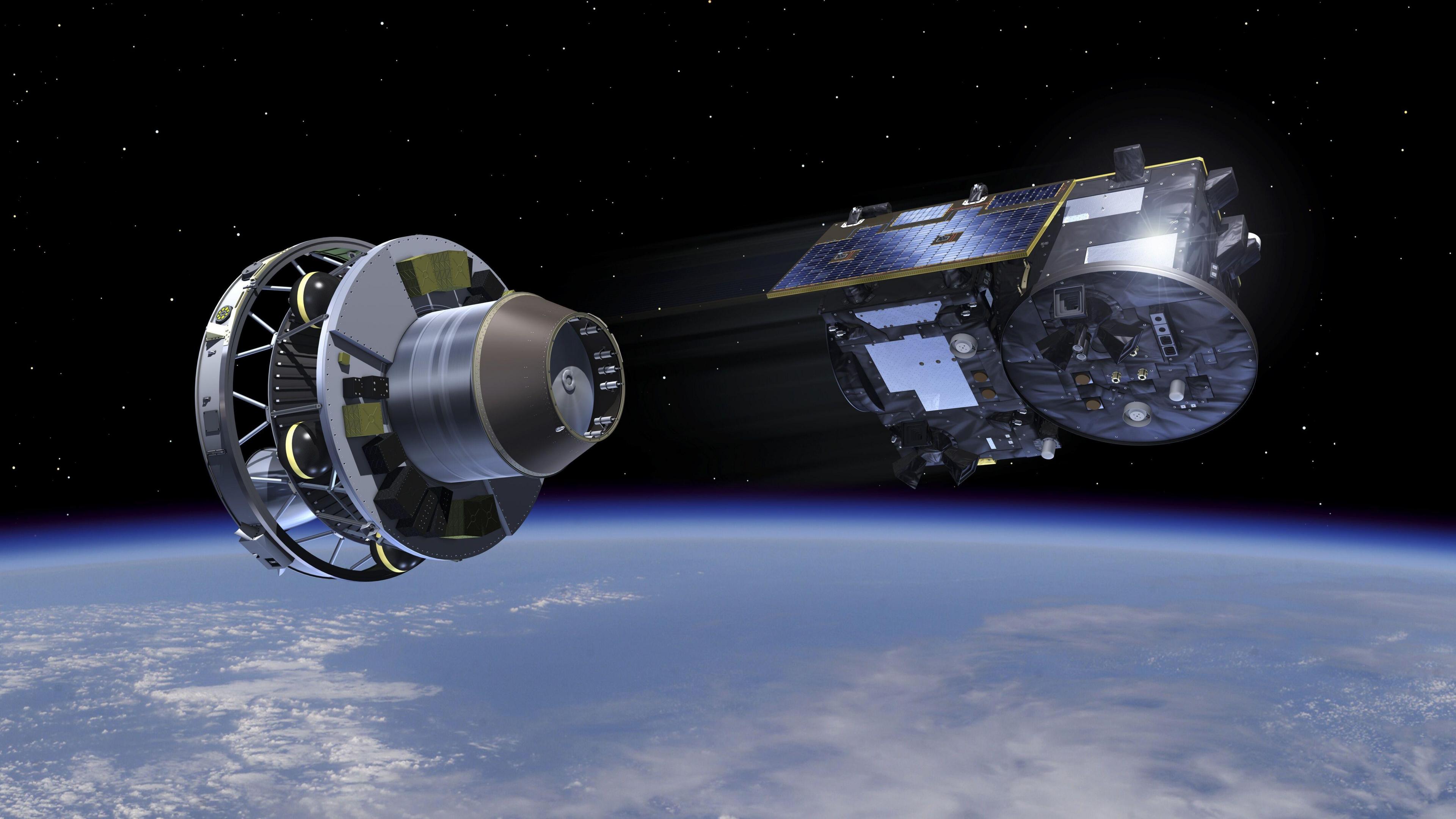
The satellites will separate after being blasted into space, but will remain linked
What is the European Space Agency's Proba-3 mission?
After taking off together the two craft will separate about 18 minutes later, they will remain linked in orbit around the Earth, 144 metres apart using lasers and light sensors.
One of the satellites will block the Sun, and the other will be watching and recording it.
To achieve this, the shadow being cast between the spacecraft must remain in a precise position, which means the craft must fly in formation to an accuracy of a single millimetre - that's about the thickness of a human fingernail.
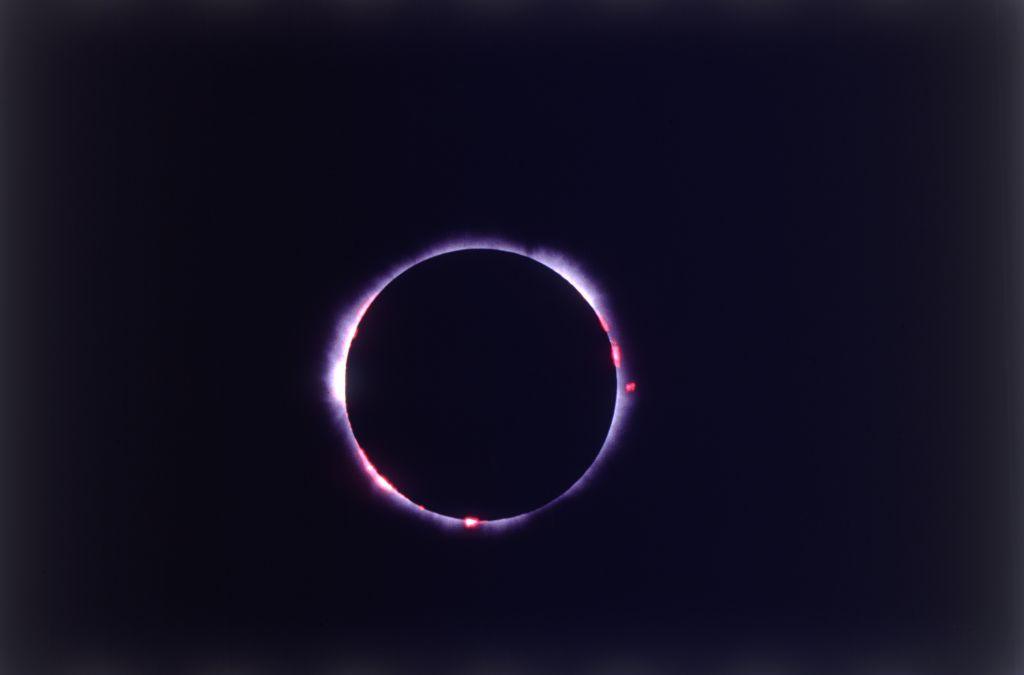
The corona of the Sun visible around the moon during a total solar eclipse
What an artificial eclipse can tell us about the Sun
Naturally, an eclipse happens when the Moon passes in front of the Sun.
In a cosmic coincidence the Sun is 400 times bigger than our Moon but also about 400 times further away, allowing the Moon to cover the Sun completely during a total solar eclipse.
When that happens, a ring of fire can be seen around the Moon.
Known as the Sun's corona - the outermost part of the Sun's atmosphere - it's a million times fainter than the fiery face of the Sun, so only naturally visible during eclipses, if only for the briefest of moments.
And it's this that scientists want to study, because it's there that solar storms occur.
Powerful solar storms can have a big impact here on Earth, causing disruption to satellites and electronic devices.
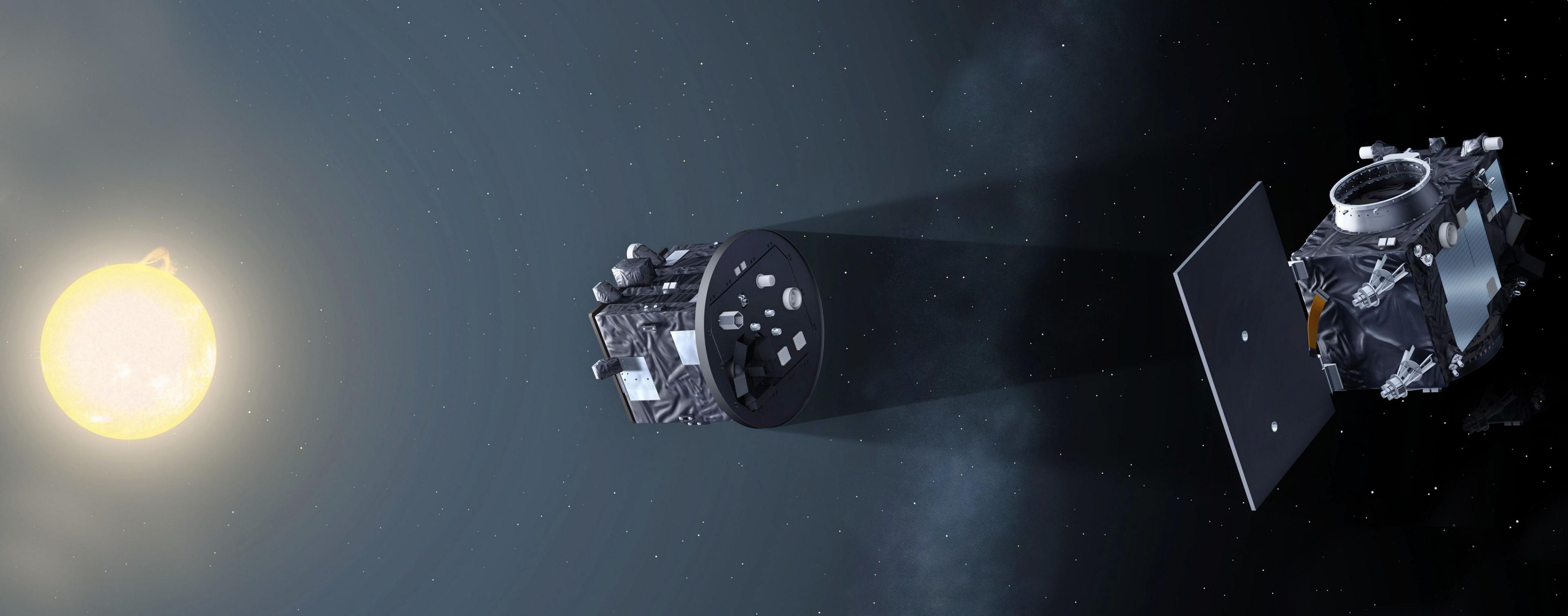
At regular intervals, one satellite will cast a shadow on the other, creating a makeshift total solar eclipse
Total solar eclipses are spectacular, but quite rare.
They happen roughly every two years but can only be seen from a very small part of Earth, so depending where you live it can be 400 years between one solar eclipse and the next.
They can also be blocked by clouds depending on the weather, and don't last very long at all, so can be very tricky for scientists to study.
The aim of the ESA's new mission is to be able to study total solar eclipses whenever they want, and that last for hours instead of minutes.
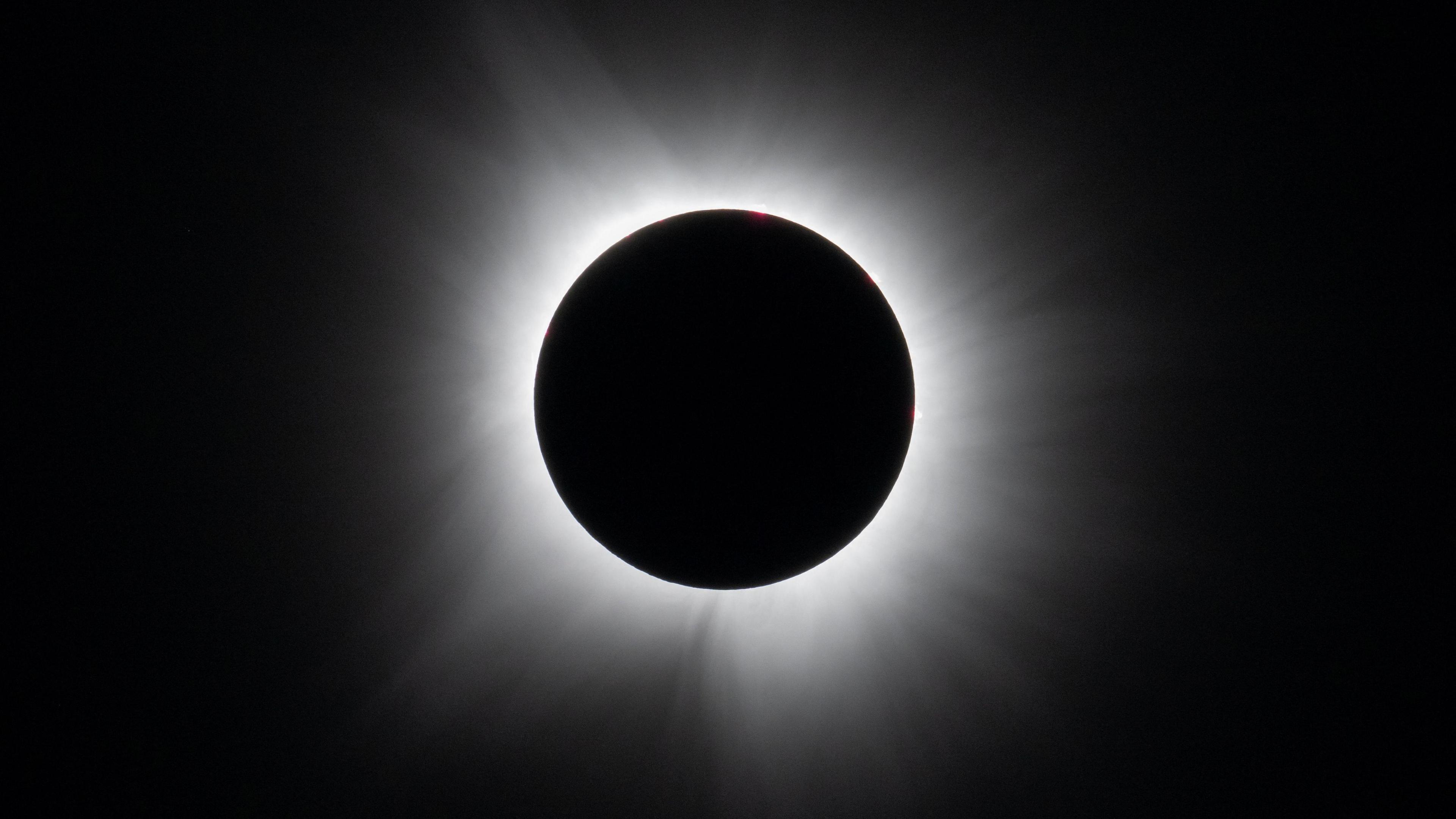
A total solar eclipse as seen from Texas in the USA earlier this year
- Published9 April 2024
